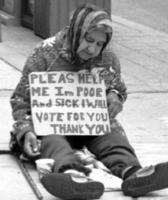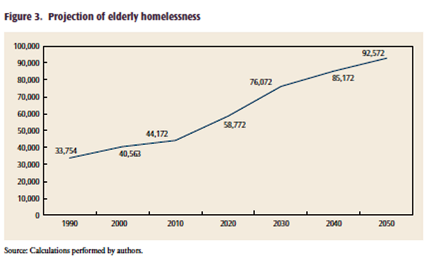Elderly American homelessness on the rise
 photo: pete6513
photo: pete6513
New reports on homelessness offer some sobering predictions. Over 95,000 elderly Americans are projected to be homeless by 2050, according to a report by the National Alliance to End Homelessness.
Homelessness among people 65 and older -- the U.S. Census Agency’s definition of the elderly -- is on track to increase 33 percent by 2020, and more than double by 2050, according to the National Alliance to End Homelessness (NAEH).
Part of the increase is due simply to the size of the aging population. The number of Americans now over the age of 65 is larger than ever before. In 1900, 3.1 million people (4.1 percent of the population) were elderly. In 2008 there were 37 million elderly (12.6 percent of the population) – a 1,100 percent increase from 1900.
The number of elderly will continue to climb. According to the NAEH, the elderly population will more than double in size between now and 2050.
The “baby boom” generation, those Americans born between 1946 and 1964, are coming into retirement age in a period of deeper poverty, higher rates of unemployment, and reduced social services than the generation before.
People become homeless for many reasons, almost all of them financial. A separate report on the homeless from the Wilder Foundation in Minnesota will be formally released next month. Wilder’s latest survey found that forty percent of homeless said they lost their last housing because of a job loss or reduction in hours; 39 percent of homeless adults left their last permanent housing because of eviction, foreclosure, or failure to have their lease renewed; and 44 percent of homeless adults are on a waiting list for public housing, up from 34 percent in 2006.
Wilder’s wait-list numbers are probably too low.
When contacted a few weeks ago about the numbers of subsidized public housing units in St. Paul, Minn., the Public Housing Authority staffer laughed, with a slight hysteria in her voice. There is no open subsidized public housing in the city, she said. The agency closed even its waiting list for new applicants a couple years ago.
Access “The Rising Elderly Population” report by M. William Sermons and Meghan Henry at the NAEH web site.
Read Wilder Research’s preliminary findings on homelessness in Minnesota

Chart: National Alliance to End Homelessness



 del.icio.us
del.icio.us Digg
Digg












Post your comment